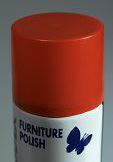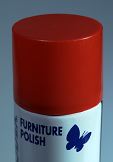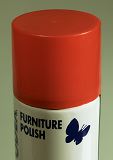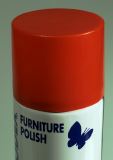

Testing the Leaf Lumina, we found that models prior to October 1994 (when we notified the problem to Leaf and their distributors) had a filter which passed too much IR light. Later models may have a better filter, but it is unlikely to be of the type (hot mirror) or strength recommended here. Tests on some scanners and the Kodak DCS indicate that not all undesirable IR is eliminated, but other CCD equipment such as a Panasonic CCTV camera checked showed no IR sensitivity. PhotoPhase and Dicomed scanning backs are supplied with separate IR filters.
Steve Rothero of OCLI (Optical Coating Laboratories Inc), Fife, Scotland, prepared two IR cutoff filters made from Tempra glass, types WBHM1 and WBHM3. He visited our studio, where we ran live tests on the Lumina with and without the filters, using tungsten Redhead 800W lights, both with and without A to D dichroic conversion filters. OCLI also have production labs in California.
Normally, the Lumina produces some scanning artefacts (frequency related noise) when used with lights of this kind. At very high illumination levels, using the lights at close range, these are minimized. They are also reduced by letting the lights warm up for 1-2 minutes before exposing. We photographed a red plastic lid on an spray can which had previously shown unusually high infrared reflectance. So had most magenta or red printing inks, dyes and photographic prints. With the Lumina used 'raw' the effect was diluted, soft color with particularly weak reds.
The first test shots were made with the A-to-D filters in place, at daylight color temperature. Without the IR filter, the Lumina scan was weak in color, especially in the red. Toning the image to darken this made some improvement, but at the expense of brilliance and color neutrality. The raw image and best attempt at a toned shot are shown left and right, below.


The next tests were with the two different IR filters, under identical conditions. The WBHM1 filter only cuts off true infrared, leaving some far red unaffected. This improved the untoned image, left, enough to render the red plastic naturally. However, the WHM3 far red and infrared cutoff filter (right hand picture) was even better, the deep red closely matching the plastic. The blue, white and grey in the pictures were all improved dramatically by this filter, which eliminated the need to adjust the tone curves entirely. Auto exposure produced perfect digital files.


Finally, we made two tests under unfiltered 3200K tungsten light, with the benefit of much shorter exposure times. Without an IR filter in place, the auto color balance of the Leaf software could not correct the cast, and the high levels of IR present in this hot tungsten light overwhelmed the image (left hand shot, below). With the WHM3 filter in place, the Lumina software restored a better color balance and superior contrast. While the result was no way as good as the A-to-D daylight balanced lighting, it would be possible to use unfiltered, 3200K tungsten for some shots on the Lumina with the OCLI filter in place. We use it for black and white regularly.


Subsequent tests, over a period of weeks, show that in low light levels using bounced tungsten heads the Lumina exhibits frequency noise if the filter is not used, but far less noise with the filter in place. This indicates that much of the 50Hz (60Hz for US AC power) frequency flicker of this unballasted lighting happens in IR output, not in visible light. We have not attempted to conduct scientific tests to show this. Practical tests prove that the Lumina becomes far more usable with this low-cost continuous light source once the strong IR cutoff filter is fitted, and statements made by Dicomed and Phase One about the compatibility of their IR-filtered scan backs with tungsten lighting appear to back this up.
So, if the cost of HMI or special fluorescent lighting has been putting you off a $5,000 (or $5,000?) investment in this versatile small rostrum and still life camera, consider investing in under $100-worth of cut, mounted OCLI filter and a suitable holder. We used the Cromatek, and also found its deep bellows lens hood improved overall quality. The Lumina has been used for all product photography and large print scanning for PHOTOpro magazine, and some commercial scan work. To date, no commercial customer has commissioned any still life work, despite all regional companies being notified. This contrasts with a high proportion of bureau customers now using Photo CD or buying desktop scanning services. Awareness of direct digital studio photography has not yet reached these markets.
(Based on original findings in DTPro section of PHOTOpro, August/September 1994, using a filter from the Dicomed system, followed up with OCLI's assistance in September 1994, and not previously published in this form due to the very specific nature of the tests and findings) - DK